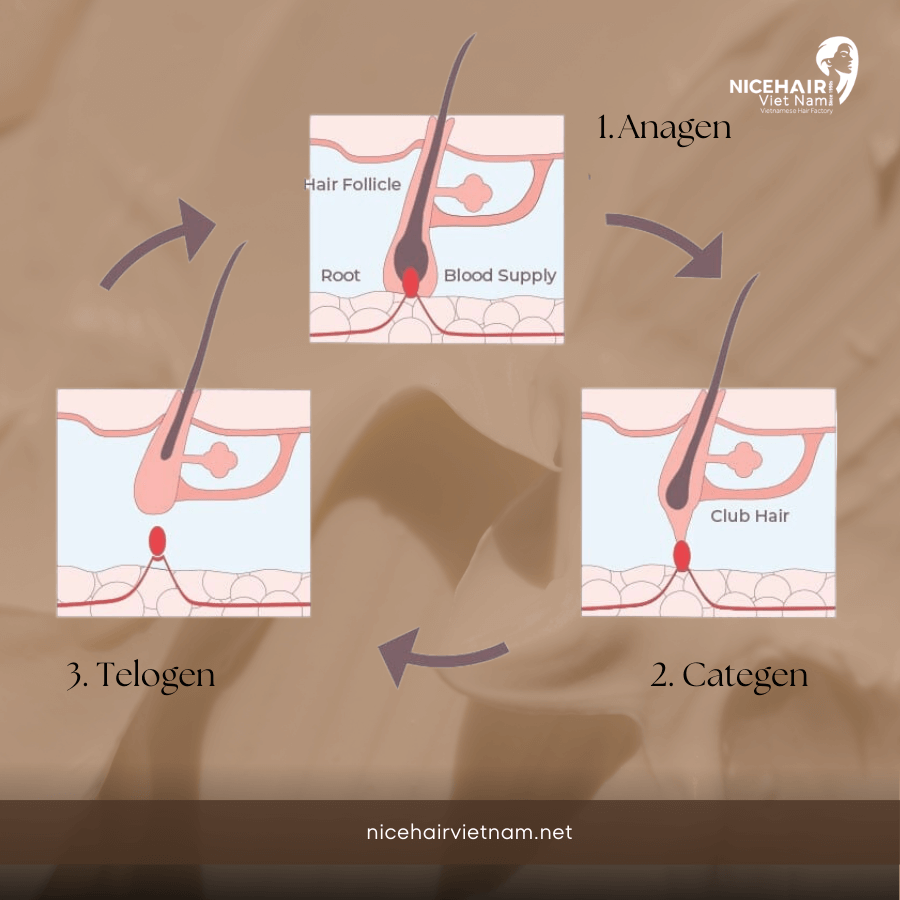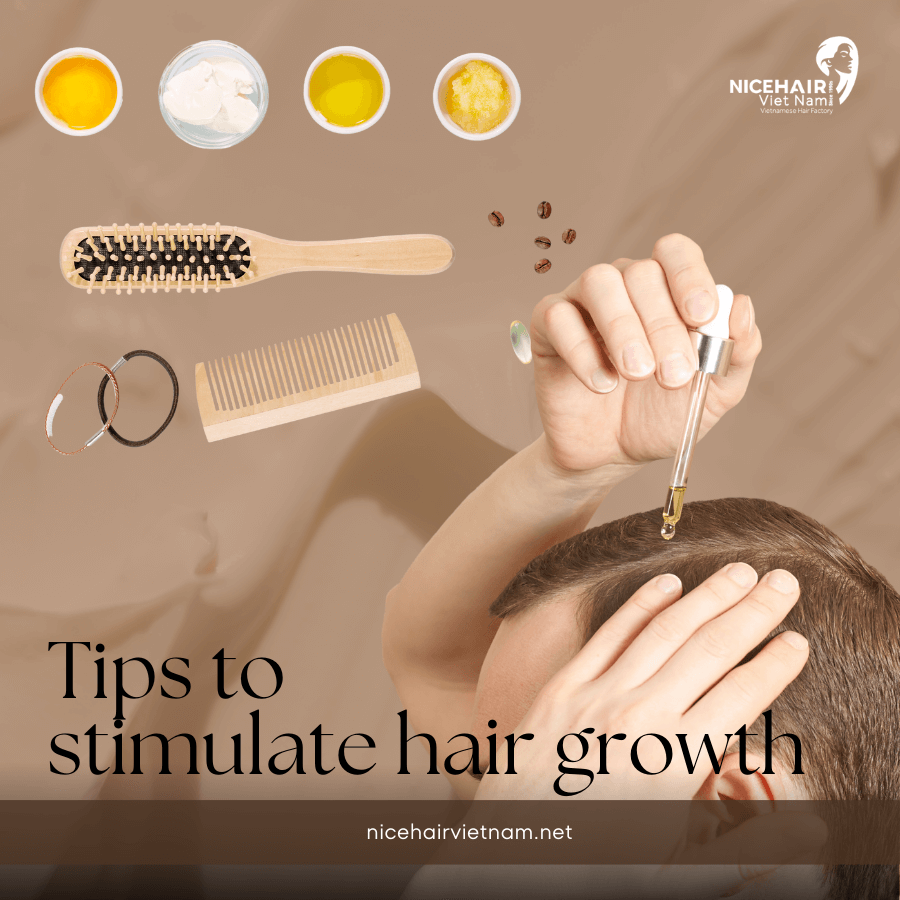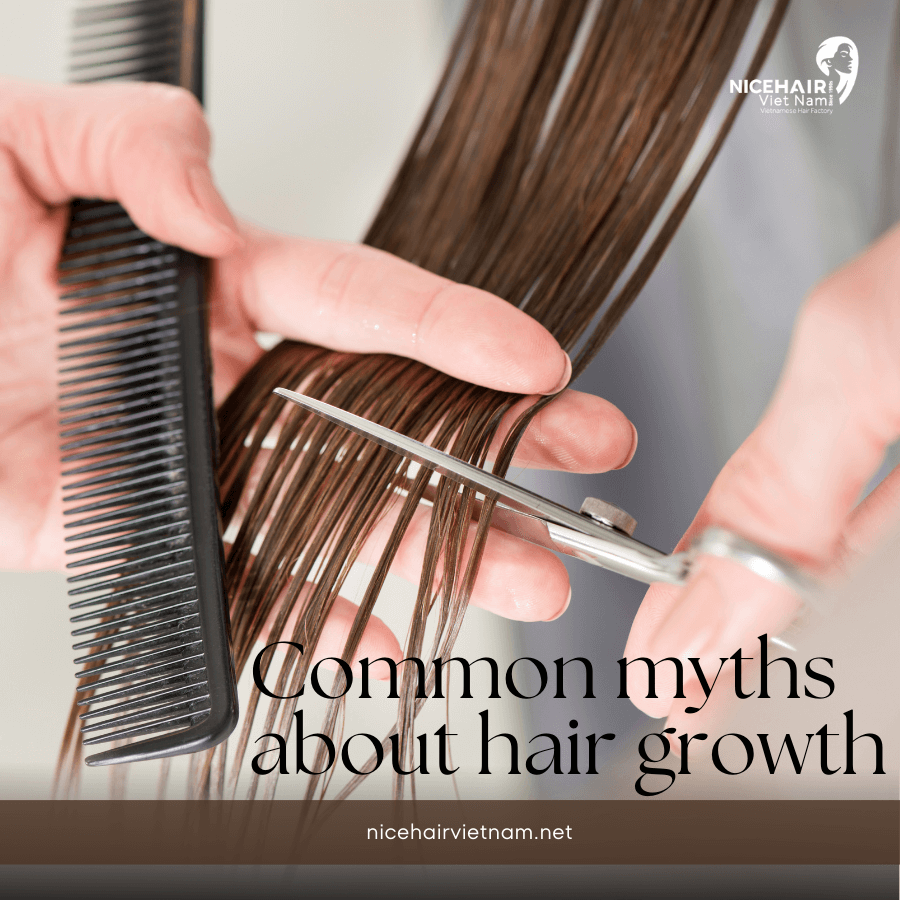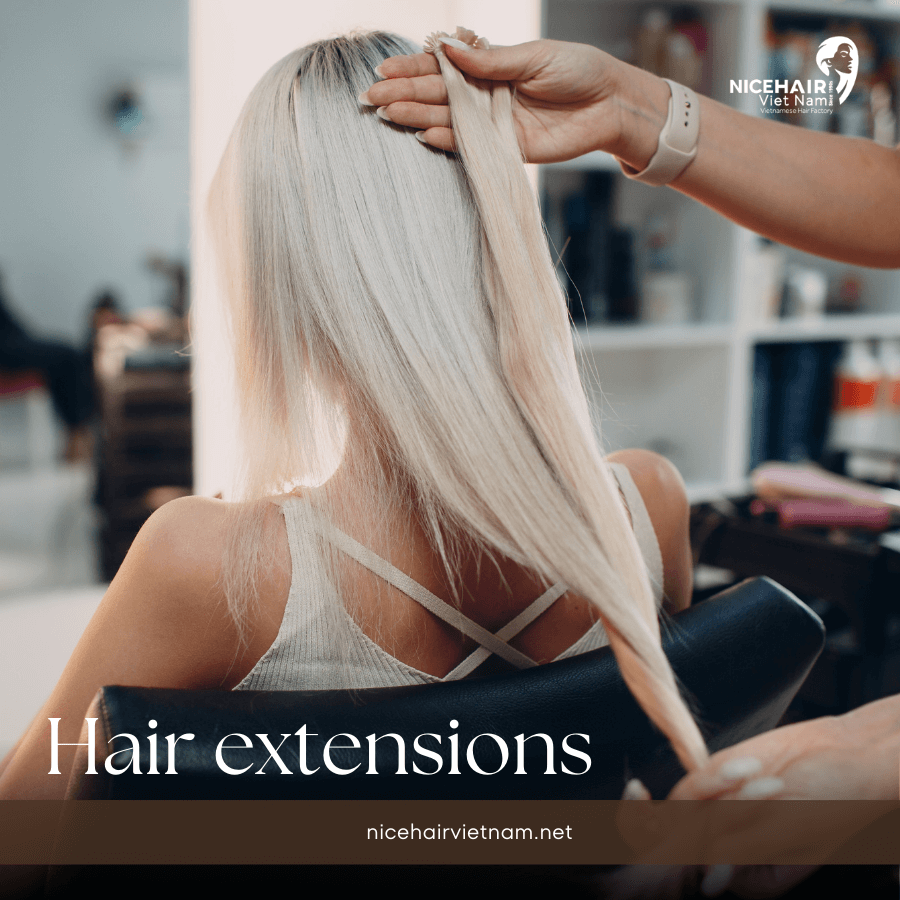Cutting your hair too short can be a disappointing experience, but there’s no need to fret. In this comprehensive guide, we’ll provide you with valuable insights on how to accelerate hair growth after a drastic haircut. We’ll also delve into the topic of hair extensions, which can be a great option to achieve longer hair while waiting for your natural hair to grow. So, whether you’re seeking methods to expedite hair growth or considering hair extensions, we’ve got you covered.
Why does hair growth take time?
Hair growth is a natural process that occurs in cycles, and it takes time for the hair to grow to its desired length. Several factors contribute to the pace of hair growth, and understanding them can help manage expectations and implement strategies to support healthy and faster hair growth.
- Genetics: One of the primary factors that determine the rate of hair growth is genetics. Each individual has a unique genetic makeup that influences the speed at which their hair grows. Some people naturally have faster-growing hair, while others may have slower-growing hair.
- Age: Hair tends to grow more rapid during younger years and slows down as a person ages. As we get older, the anagen phase becomes shorter, resulting in slower growth and thinner hair strands.
- Health and nutrition: The overall health of an individual plays a crucial role in hair growth. A balanced diet rich in essential nutrients, such as proteins, vitamins (especially vitamin D and biotin), minerals (iron and zinc), and omega-3 fatty acids, provides the necessary building blocks for healthy hair growth. Poor nutrition and certain medical conditions can hinder hair growth and result in slower hair regrowth after a haircut.
- Hair care practices: The way we care for our hair can impact its growth rate. Excessive heat styling, chemical treatments, and improper hair care routines can cause damage to the hair shaft and lead to breakage, which slows down the appearance of hair growth. It’s essential to adopt gentle hair care practices, including regular conditioning, minimizing heat styling, and avoiding harsh chemicals.
- Environmental factors: Environmental factors, such as exposure to pollution, harsh weather conditions, and UV radiation, can affect the health and growth of hair. Protecting the hair from environmental stressors and maintaining a clean and healthy scalp can contribute to optimal hair growth.
- Hormonal changes: Hormonal fluctuations, such as those experienced during pregnancy, menopause, or certain medical conditions, can affect the hair growth cycle. These hormonal changes can lead to temporary hair loss or hair thinning, which may impact the perception of hair growth.
Hair growth cycle
What is hair growth cycle? The hair growth cycle refers to the continuous process of hair growth, rest, and shedding that occurs in each hair follicle on our scalp.
The hair growth cycle consists of three main phases: anagen, catagen, and telogen. The anagen phase is the active growth phase, where the hair follicles produce new hair cells. This phase can last for several years, and the length of this phase determines the potential length that hair can reach. The catagen phase is a transitional phase, and the telogen phase is the resting phase where the hair sheds and makes way for new hair growth.
- The anagen phase is the active growth phase of hair, which lasts between 2 and 8 years. During this phase, the hair follicles are actively producing new hair cells, and the hair grows longer. The length of the anagen phase varies from person to person and is mostly determined by genetics.
- After the anagen phase, the hair enters the catagen phase, which is a transitional phase that lasts about 4 to 6 weeks. During this phase, the hair follicles shrink, and the hair stops growing.
- Finally, the hair enters the telogen phase, which is a resting phase that lasts about 3 months. During this phase, the hair follicles are dormant, and the hair falls out. After the telogen phase, the hair growth cycle starts again with the anagen phase

While it may be tempting to try quick-fix solutions for faster hair growth, it’s important to remember that there are no overnight remedies. Patience, consistency in healthy hair care practices, and adopting a holistic approach to overall wellness are key to supporting the natural hair growth process. By nourishing your body, maintaining a healthy scalp, and minimizing hair damage, you can optimize the conditions for hair and eventually achieve the desired length.
Tips to stimulate hair growth
If you’re looking to speed up the hair growth process and encourage healthy and faster hair growth, there are several tips and techniques you can incorporate into your hair care routine. While it’s important to remember that individual hair growth rates vary, these tips can help optimize the conditions and support overall hair health. Let’s explore some effective strategies:
- Scalp massage:
Massaging your scalp can help stimulate blood circulation to the hair follicles, promoting hair growth. Gently massage your scalp using circular motions with your fingertips for a few minutes each day. You can also use natural oils like coconut oil or olive oil to enhance the massage and provide nourishment to the scalp.
- Take hair supplements:
There are several supplements on the market that claim to promote hair growth. Look for supplements that contain biotin, vitamin D, and iron, as these nutrients are known to support hair health and growth
- Use essential oils:
Essential oils, such as rosemary, peppermint, and lavender, have been known to support hair growth. These oils can help improve blood flow to the scalp and nourish the hair follicles. Mix a few drops of your preferred essential oil with a carrier oil like jojoba or almond oil, and massage it into your scalp. Leave it on for a few hours or overnight before washing it out.
- Avoid excessive heat styling:
Heat styling tools like flat irons, curling irons, and blow dryers can cause damage to the hair and hinder hair growth. Limit the use of heat styling tools and opt for heatless styling methods or use a heat protectant spray before applying heat to your hair.
Trim regularly: Although it may seem counterintuitive, getting regular trims can actually help promote hair growth. Trimming the ends of your hair every 6-8 weeks prevents split ends from traveling up the hair shaft, reducing breakage and allowing your hair to grow longer and healthier.
- Protect your hair:
Minimize exposure to harsh environmental elements, such as sun, wind, and pollution, as they can damage your hair and impede its growth. When spending time outdoors, cover your hair with a hat or scarf to shield it from these factors.
- Avoid tight hairstyles:
Pulling your hair back tightly in ponytails, buns, or braids can lead to tension on the hair follicles, causing breakage and even traction alopecia. Opt for looser hairstyles and avoid using tight hair accessories to minimize damage to the hair.
- Choose the right hair products:
Use hair care products that are suitable for your hair type and promote hair growth. Look for shampoos and conditioners that are free of harsh chemicals and sulfates. Consider incorporating products with ingredients like biotin, keratin, or collagen, which can help strengthen the hair strands.
- Eat a balanced diet:
Proper nutrition is essential for healthy hair growth. Include a variety of foods in your diet that are rich in vitamins A, C, and E, as well as biotin, iron, minerals and proteins. Focus on consuming foods that are high in protein leafy greens, berries, eggs, fatty fish, nuts, and seeds provide essential nutrients that support hair growth and overall hair health.
- Stay hydrated:
Drinking an adequate amount of water is crucial for overall hair and scalp health. Hydration keeps the hair follicles nourished and promotes optimal hair growth. Aim to drink at least 8 glasses of water per day.
- Manage stress:
Chronic stress can disrupt the hair growth cycle and lead to hair loss or slow hair growth. Practice stress-management techniques such as meditation, yoga, or deep breathing exercises to reduce stress levels and support healthy hair growth.

Incorporating these tips into your daily routine can help create a favorable environment for hair growth and promote the health of your hair. Remember, consistency and patience are key, as it takes time to see noticeable results. Along with these tips, it’s important to maintain a healthy lifestyle and be gentle with your hair to encourage optimal growth.
Hair care Don’ts
Proper hair care is essential for maintaining healthy hair and promoting faster growth. By avoiding common don’ts, you can ensure that your hair stays in optimal condition.
- Don’t overwash hair: Avoid washing your hair too frequently, as it can strip away the natural oils that keep your hair moisturized. Stick to a regular washing schedule that suits your hair type and lifestyle.
- Don’t use excessive heat: Minimize the use of heat styling tools like flat irons, curling irons, and blow dryers. Excessive heat can damage your hair and lead to breakage. Embrace heatless styling methods whenever possible.
- Don’t brush wet hair vigorously: Wet hair is more fragile and prone to breakage. Avoid vigorous brushing or combing when your hair is wet. Instead, use a wide-tooth comb or detangling brush to gently remove tangles.
- Don’t pull your hair too tight: Avoid hairstyles that cause excessive tension on your hair, such as tight ponytails, braids, or buns. Pulling your hair tightly can lead to hair breakage and traction alopecia.
- Don’t sleep with hair ties or clips: Sleeping with hair ties or clips can cause hair breakage and create unnecessary tension on your hair. Opt for loose hairstyles or use silk or satin pillowcases to minimize friction and hair damage while sleeping.
- Don’t overload hair with products: Using too many hair care products can weigh down your hair and lead to buildup. Apply products sparingly and only use what is necessary for your hair type and desired style.
- Don’t ignore scalp: A healthy scalp is the foundation for healthy hair. Regularly exfoliate your scalp to remove dead skin cells and promote circulation. Avoid excessive scratching or picking at your scalp, as it can cause irritation and damage.
- Don’t skip regular trims: Avoid the temptation to skip regular trims in an attempt to grow your hair faster. Regular trims help prevent split ends from traveling up the hair shaft, leading to further damage.
- Don’t use harsh hair accessories: Be mindful of the hair accessories you use. Avoid using accessories with rough edges or metal parts that can snag or break your hair. Opt for hair-friendly accessories like fabric scrunchies or gentle hair clips.
Debunking common myths about hair growth
There are many myths and misconceptions surrounding hair growth that can sometimes lead to confusion and misinformation. Let’s take a closer look at some common myths about hair and separate fact from fiction.
Myth 1: Plucking a gray hair causes more to grow
Debunked: Plucking a gray hair will not cause more gray hairs to grow in its place. Gray hairs are a natural part of the aging process and are determined by genetics and other factors. However, excessive plucking can damage the hair follicle and potentially lead to hair thinning or permanent hair loss, so it’s best to avoid excessive plucking.
Myth 2: Brushing your hair 100 strokes a day promotes hair growth
Debunked: While brushing your hair can help distribute natural oils and detangle it, there is no scientific evidence to support the claim that brushing your hair a specific number of times each day stimulates hair growth. Overbrushing can actually lead to hair breakage and damage, so it’s best to brush your hair gently and as needed.
Myth 3: Shampooing every day causes hair loss
Debunked: Washing your hair frequently with a gentle shampoo does not cause hair loss. In fact, keeping your scalp and hair clean is important for maintaining a healthy environment for hair growth. However, using harsh shampoos or excessive scrubbing can lead to dryness and damage, so it’s important to choose a suitable shampoo and avoid aggressive washing techniques.
Myth 4: Hair grows faster in summer
Debunked: There is no scientific evidence to support the belief that hair grows faster during the summer months. Hair growth is determined by factors like genetics, overall health, and hair care practices, rather than seasonal changes. The perception of faster growth in summer may be due to increased humidity, which can make the hair appear fuller and longer.
Myth 5: Massaging your scalp with oil makes your hair grow faster
Debunked: While scalp massage with oil can improve blood circulation and promote relaxation, there is no direct evidence to suggest that it makes hair grow faster. Scalp massage can indirectly support hair growth by providing a healthy environment for the hair follicles, but it does not stimulate the rate of growth itself.
Myth 6: Wearing hats causes hair loss
Debunked: Wearing hats does not cause hair loss. Hats can protect your hair and scalp from the sun’s harmful UV rays, which can actually benefit hair health. However, it’s important to choose hats that fit properly and are not overly tight, as constant friction or tension on the hair can lead to breakage.
Myth 7: Stress is the main cause of hair loss
Debunked: While stress can contribute to hair loss in some cases, it is not the sole cause. Hair loss can be influenced by various factors, including genetics, hormonal changes, nutritional deficiencies, and underlying medical conditions. It’s important to address the underlying cause of hair loss rather than solely attributing it to stress.
Myth 8: Using hair products can make your hair grow faster
Debunked: Hair products like shampoos, conditioners, and serums can help improve the overall health and appearance of your hair, but they do not directly impact its growth rate. Hair growth occurs at the scalp level, and products applied to the hair shaft cannot alter the rate of growth. However, using quality hair products can support a healthy scalp and hair, creating an optimal environment for growth.
Myth 9: Cutting hair makes it grow faster
Debunked: Cutting your hair does not affect its growth rate. Hair growth occurs at the root level, and cutting the ends does not impact the follicles or the rate at which your hair grows. Trimming your hair regularly can help maintain its health and prevent split ends, but it does not actually stimulate faster growth.

Myth 10: Hair grows after death
Debunked: This is a common myth with no scientific basis. Hair growth requires a living hair follicle and cannot occur after death. The appearance of hair on deceased individuals is often a result of the skin shrinking, making the hair shafts more visible.
By debunking these common myths about hair, we can gain a better understanding of what truly affects the growth rate and health of our hair. It’s important to rely on scientific evidence and expert advice when it comes to hair care and growth. Stay tuned for more insights on natural remedies for accelerated hair growth.
Hair extensions: immediate solution
What are hair extensions? Hair extensions are artificial or natural hair strands that are added to a person’s existing hair to create length, volume, or different styles. They are used to enhance the appearance of one’s hair by adding extra length, thickness, or even adding highlights or color without the need for chemical treatments or waiting for natural hair growth.
If you’re looking for a more immediate solution to your short hair problem, who desire longer or fuller hair without waiting for natural hair growth. They can instantly transform your look and provide versatility in styling. Here are a few things to keep in mind when considering hair extensions:
Types of hair extensions
Clip-in extensions: These temporary extensions are clipped onto your natural hair and can be easily removed whenever desired. They are a popular choice for those who want to experiment with longer or voluminous hair for special occasions or events.
Tape-in extensions: These extensions are applied using adhesive tape and blend seamlessly with your natural hair. They are considered semi-permanent and can last for several weeks with proper care.
Sew-in or weave extensions: This method involves sewing or braiding the extensions into your natural hair. It provides a more long-lasting solution and is suitable for those who want to keep the extensions for an extended period.
Fusion or bonded extensions: In this method, individual hair strands are bonded to your natural hair using a keratin or protein-based adhesive. They offer a natural look and can last for several months before requiring maintenance.
Choosing the right hair extensions:
Quality: Opt for high-quality hair extensions made from 100% human hair. Remy hair, where the cuticles are kept intact and aligned, is considered one of the best choices as it provides a natural look and longevity.
Color match: Select extensions that closely match your natural hair color. If needed, you can also consider getting extensions in a slightly lighter shade and have them professionally colored to match your hair perfectly.
Texture: Choose extensions that match the texture of your natural hair, whether it’s straight, wavy, or curly. This will help the extensions blend seamlessly with your own hair.
Length and volume: Determine the desired length and volume you want to achieve with your extensions. Keep in mind that longer extensions may require more care and maintenance.
Caring for hair extensions:
Gentle Handling: Treat your extensions with care to avoid tangling and damage. Use a wide-tooth comb or a brush specifically designed for extensions to gently detangle them.
Washing and Styling: Follow the recommended washing and styling instructions provided by the manufacturer. Use sulfate-free and extension-friendly hair products to ensure the longevity of your extensions.
Heat protection: When using heat styling tools, apply a heat protectant spray to prevent damage to the extensions. Use a lower heat setting to avoid excessive heat exposure.
Sleeping and swimming: Tie your hair in a loose braid or ponytail before going to bed to prevent tangling. Before swimming, it’s best to tie your hair up or wear a swim cap to protect the extensions from chlorine or saltwater damage.

Professional help and maintenance:
For the best results, consider consulting with a professional hairstylist who specializes in hair extensions. They can help you choose the right type, color, and length of extensions and provide expert application and maintenance advice.
Regular maintenance appointments are essential for keeping your extensions in optimal condition. Follow the recommended maintenance schedule and visit your hairstylist for adjustments or removal when needed.
Temporary vs. permanent options:
Temporary extensions, such as clip-ins, are ideal for those who want to switch up their look for specific occasions or events. They offer versatility and convenience as you can easily remove and reapply them.
Permanent extensions, like tape-ins, sew-ins, or fusion extensions, provide a longer-lasting solution. They require more maintenance and professional assistance for application and removal.
Remember, proper care and maintenance are key to prolonging the lifespan of your hair extensions. When done correctly, extensions can be a fantastic way to achieve your desired hair length and volume, allowing you to explore different hairstyles and enhance your overall look. Contact the team at nicehairvietnam-net-492844.hostingersite.com to help your hair with the best hairstyle and quality hair extensions.
Contact us
Website: nicehairvietnam.com
Whatsapp: (+84) 846009647
Email: hakan@nicehairvietnam.com
Factory address: Factory No1, Dong Tho’s Street Zone, Yen Phong Dist., Bac Ninh Province, Vietnam.
Office: No.25 Tho Thap Ward, Dich Vong Hau Ward, Cau Giay District, Hanoi City, Viet Nam.

